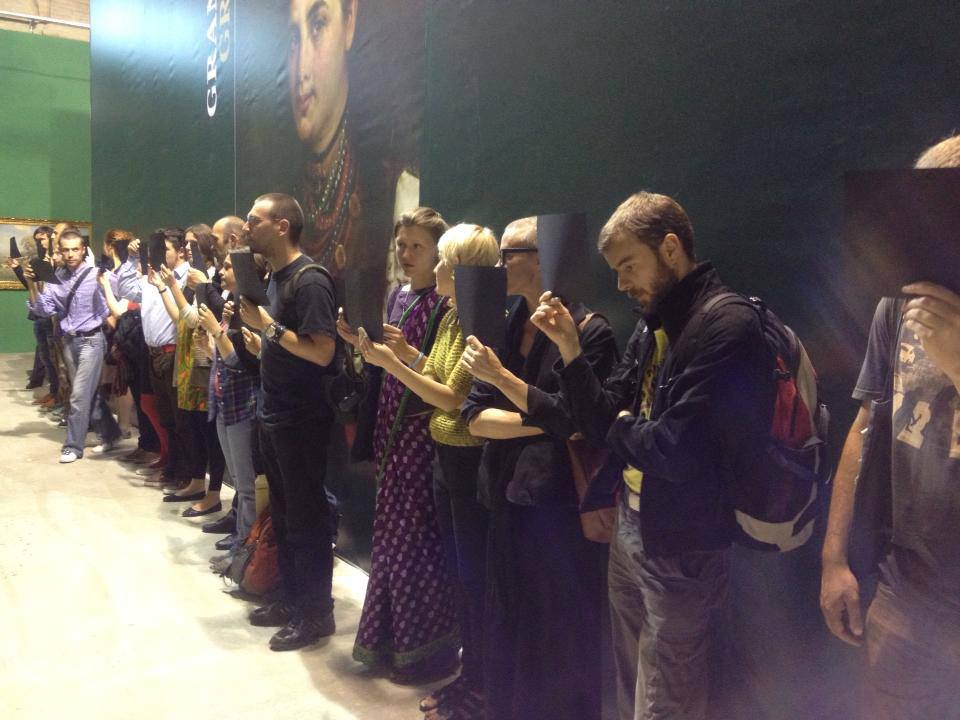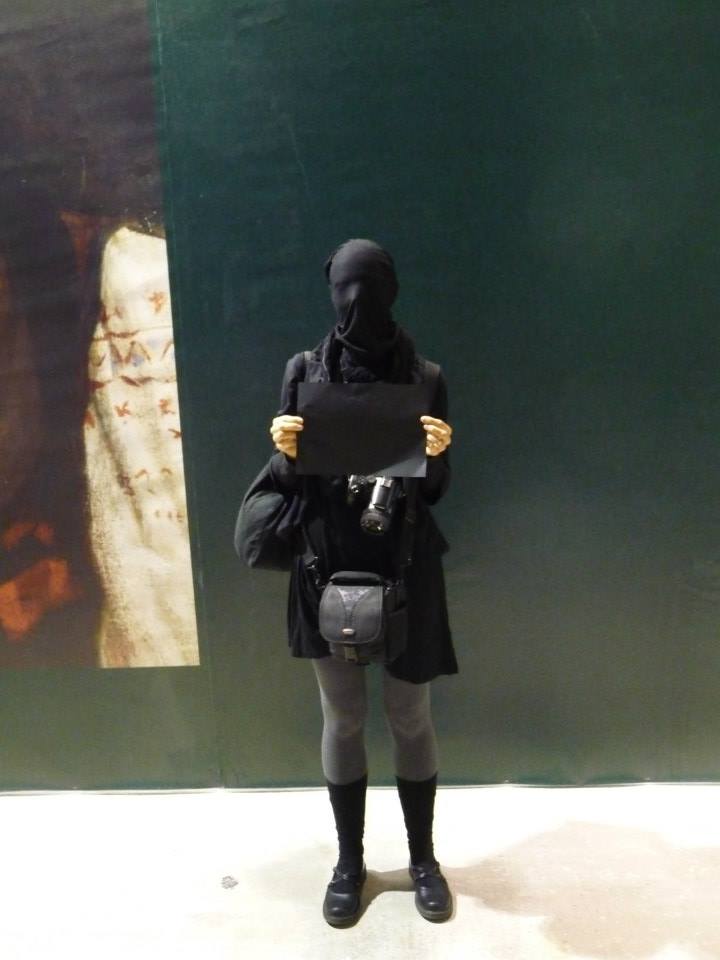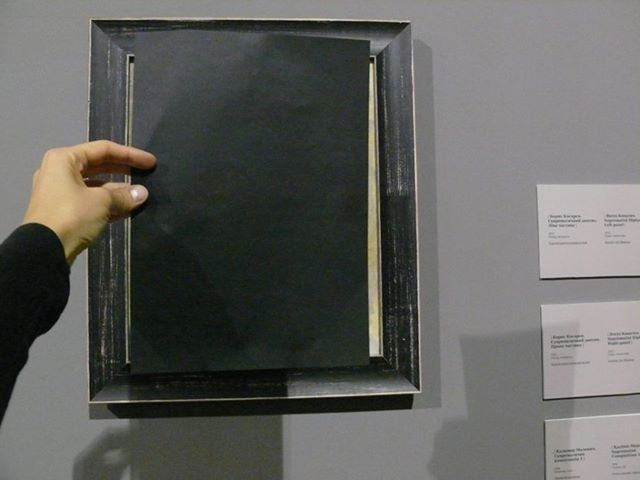Open Letter from the Art Workers’ Self-Defense Initiative to the Ukrainian and International Art Community
Open Letter from the Art Workers’ Self-Defense Initiative to the Ukrainian and International Art Community(The Art Workers’ Self-Defense Initiative was established in Kyiv in 2012 to monitor and influence common practices in Ukraine’s cultural sphere, especially regarding the transparency and legality of institution–artist relations and the fair compensation of artistic labor.)
We are calling for a boycott of Mystetskyi Arsenal and all of its affiliate organizations in response to the situation surrounding the exhibition Great and Grand, which became part of the celebration of the 1025th anniversary of the baptism of Kyivan Rus (July 26-28, 2013).(Mystetskyi Arsenal (Ukrainian for “Art Arsenal”) is Ukraine’s largest cultural complex, managed under the auspices of the Presidential administration and funded through the national budget and charitable donations. Actively functioning as an exhibition and event space since 2010, it has hosted numerous art fairs, exhibitions of historical artifacts, and Kyiv’s first biennial of contemporary art ARSENALE 2012. Its affiliates include the journal Art Ukraine and small exhibition space Mala Galereya of Mystetskyi Arsenal.)

By organizing this exhibition, Mystetskyi Arsenal revealed itself to be an ideologized, pro-regime institution, as well as an instrument for imitating cultural processes. Such activity does not correspond to the challenges of today’s world and thus does not create space for contemporary art.
 The recent events involving the censorship of Volodymyr Kuznetsov’s work Koliivshchyna: Judgment Day and the exclusion of Vasyl Tsagolov’s painting Molotov Cocktail from the exhibition revealed the curatorial ineptitude of those who work for the institution Mystetskyi Arsenal.(The events leading up to the opening of Great and Grand have been widely covered in the Ukrainian and international press. Please see articles in Radio Free Europe/Radio Liberty and the New York Times for more details.)
The recent events involving the censorship of Volodymyr Kuznetsov’s work Koliivshchyna: Judgment Day and the exclusion of Vasyl Tsagolov’s painting Molotov Cocktail from the exhibition revealed the curatorial ineptitude of those who work for the institution Mystetskyi Arsenal.(The events leading up to the opening of Great and Grand have been widely covered in the Ukrainian and international press. Please see articles in Radio Free Europe/Radio Liberty and the New York Times for more details.)
By proclaiming the exhibition Great and Grand a “project of self-awareness and true lesson in national pride in Ukrainian culture,” Mystetskyi Arsenal is creating a precedent for uncritical and simplistic treatment of both the historical narrative and current problems, presenting culture as an attractive object working for the fusion of state and church, which in this instance is encroaching even on artistic space.
A state institution cannot serve the caprices and phobias of the authorities; it should represent the critical and discursive knowledge produced by art, which is possible only through a conscious and critical attitude toward the underpinnings of the institution’s cultural policy.
This act of censorship has also been detrimental to the international reputation of Mystetskyi Arsenal and has raised doubts about the possibility of holding significant international contemporary art exhibitions within its walls.
In light of the above-mentioned events, we maintain that art is capable of resisting increasing religious fundamentalism. We insist on the autonomy of the state art institution, which must not be utilized by any official, religious, ideological or commercial forces.
 This boycott of Mystetskyi Arsenal will last until this particular institution demonstrates that it is capable of expressing its position and comprehending its policies; and renounces further acts of censorship and imitation of artistic activity. The actions of director N. Zabolotna exposed the actual state of things in Mystetskyi Arsenal and demonstrated how an executive becomes a substitute for the institution. In Arsenal, the only free creative expression possible was the “performance of power,” enacted to punish artists for their “insolence.”
This boycott of Mystetskyi Arsenal will last until this particular institution demonstrates that it is capable of expressing its position and comprehending its policies; and renounces further acts of censorship and imitation of artistic activity. The actions of director N. Zabolotna exposed the actual state of things in Mystetskyi Arsenal and demonstrated how an executive becomes a substitute for the institution. In Arsenal, the only free creative expression possible was the “performance of power,” enacted to punish artists for their “insolence.”
Collaboration with this institution in its current state is impossible.
We demand that Mystetskyi Arsenal:
- Declare the principles that underlie the activity of Mystetskyi Arsenal as an Institution;
- Legalize relations between the Institution and artists;
- Publicly acknowledge the situation surrounding the works of Tsagolov and Kuznetsov as, respectively, an act of censorship and censorship and vandalism;
- Publicly guarantee that similar acts of censorship will not be repeated in the future.
The Art Workers’ Self-Defense Initiative
August 2013




